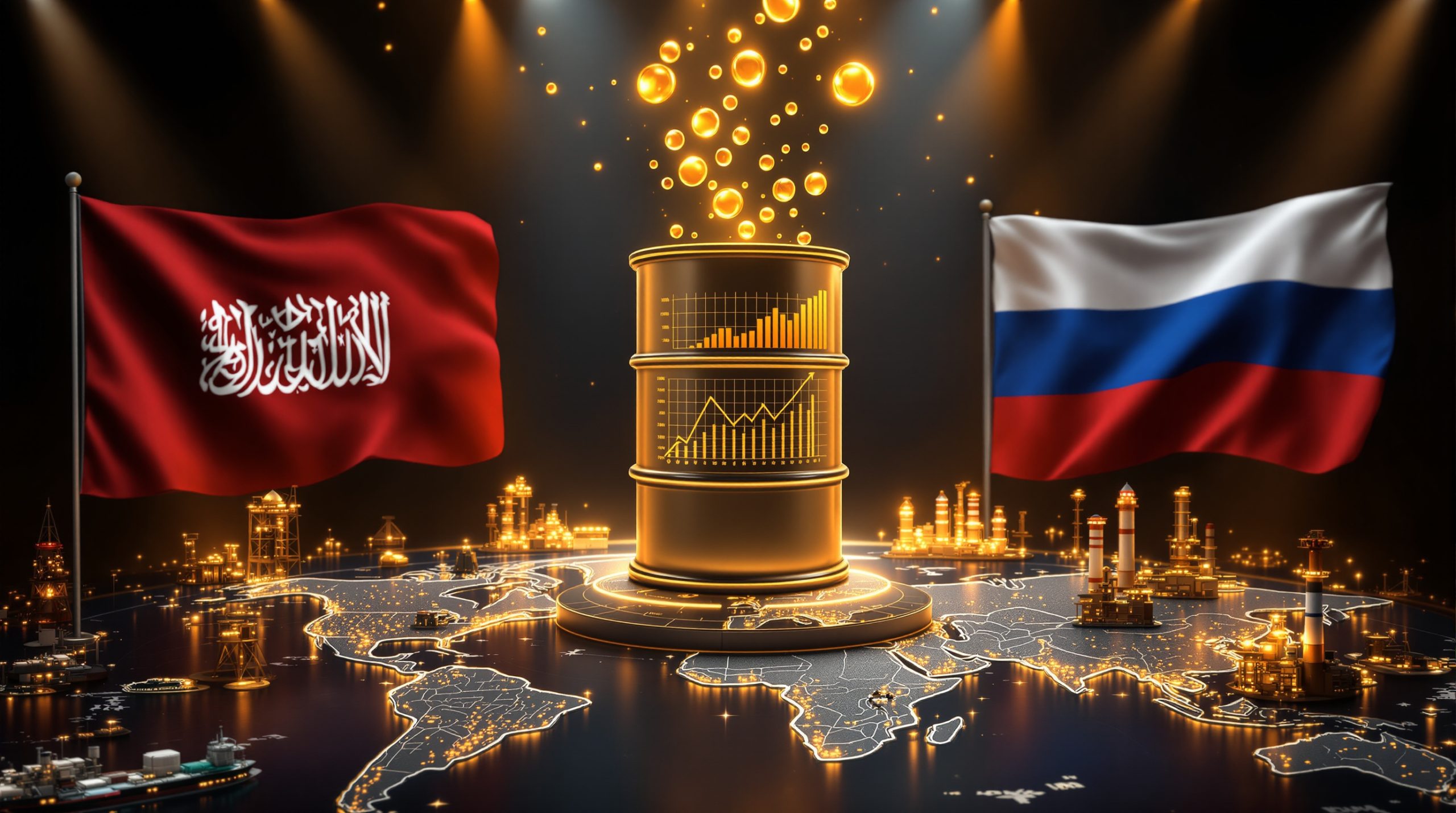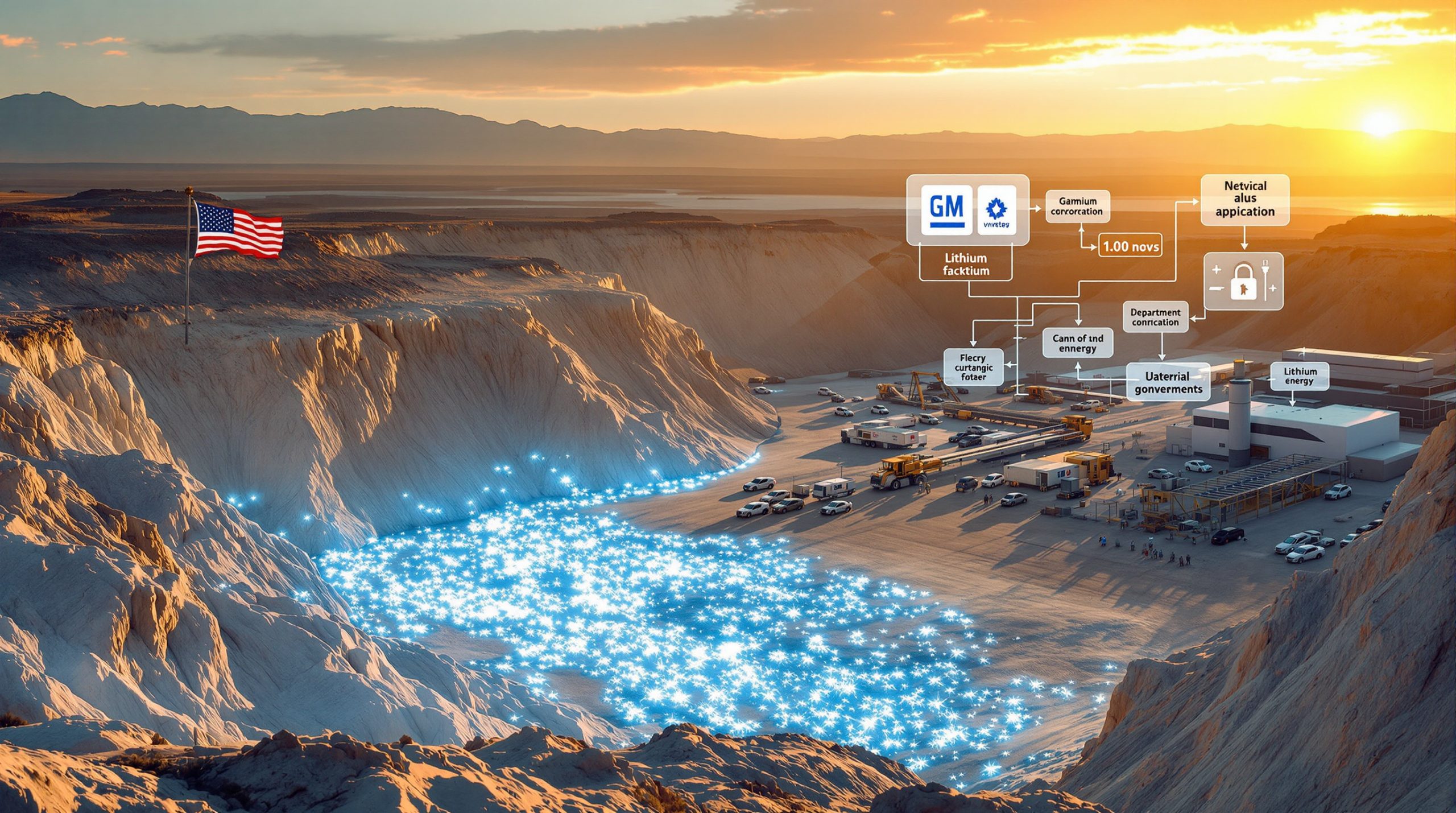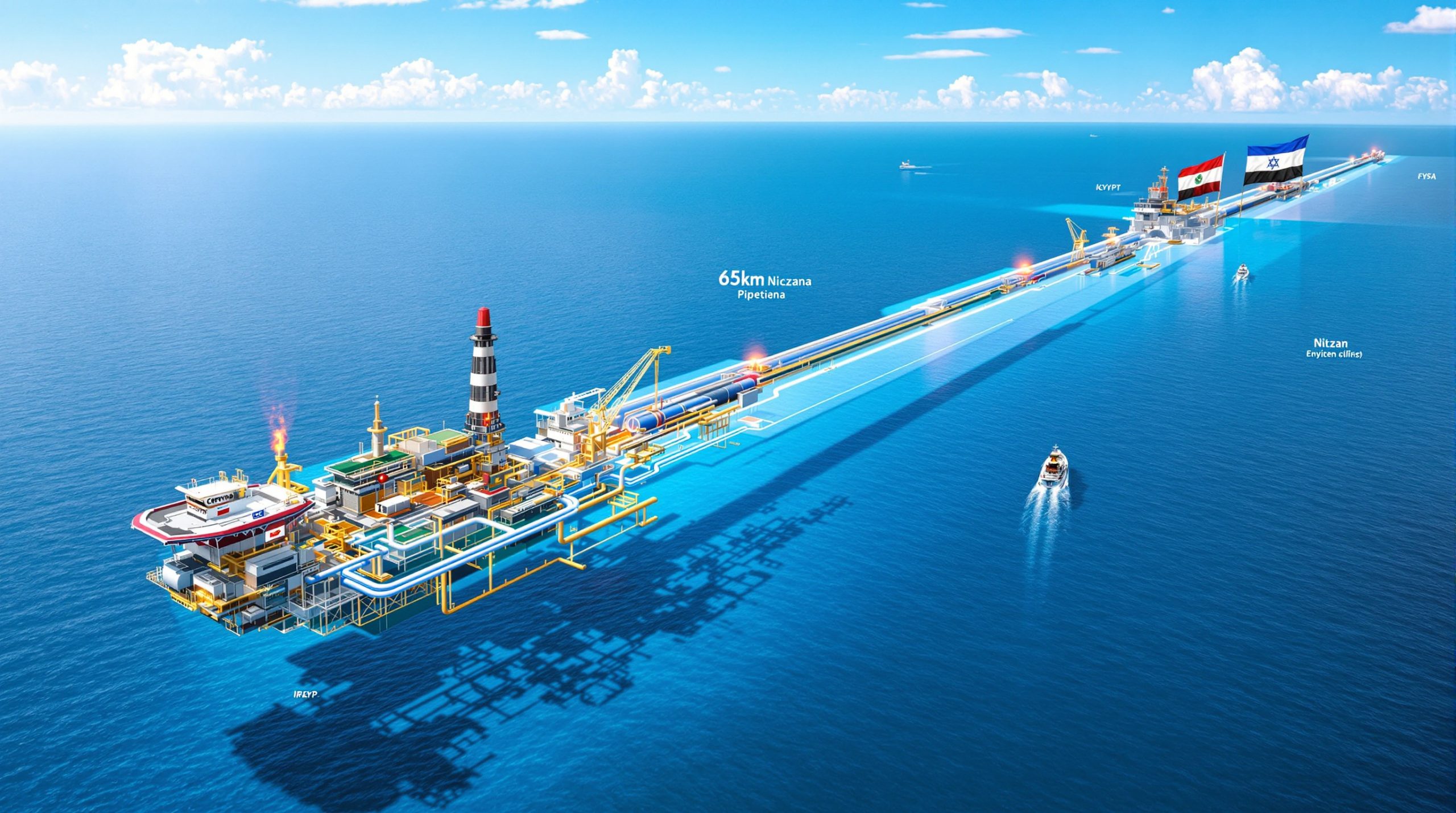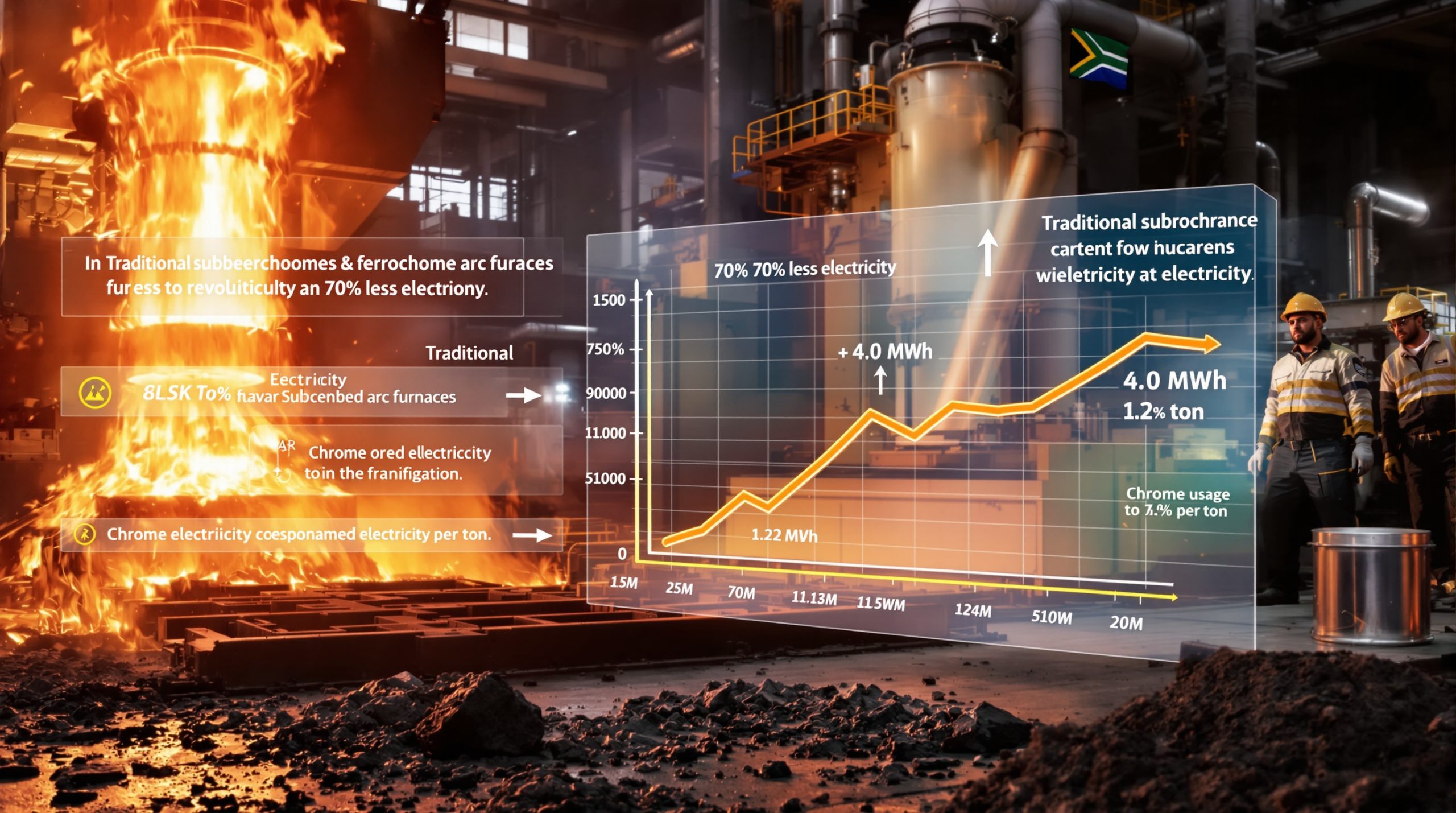What Makes the China-Malaysia Rare Earths Partnership Groundbreaking?
The China-Malaysia rare earths refinery project represents a historic shift in global rare earths processing dynamics. This potential collaboration between Chinese state-owned enterprises and Malaysia's sovereign wealth fund, Khazanah Nasional, marks an unprecedented departure from China's longstanding policy of jealously guarding its rare earths processing technology. For decades, China has maintained tight control over its processing expertise to preserve its dominant position in the global rare earth reserves analysis.
The Unprecedented Technology Transfer Proposal
China's willingness to share its closely-guarded processing technology with Malaysia signals a remarkable strategic pivot. Historically, Beijing has maintained strict prohibitions on exporting rare earths processing technology to protect its estimated 85% market share of global processing capacity. This technology-for-resources exchange model breaks with decades of established Chinese policy.
The proposed deal structure is particularly noteworthy because it reveals China's evolving strategy to maintain influence in global rare earths markets while securing access to new resources. Rather than simply restricting exports or technology transfer, China appears to be adopting a more collaborative approach with selected strategic partners.
"This joint venture would represent a significant departure from China's traditional protection of its rare earths technological advantage," notes a Malaysian government official familiar with the negotiations. "The willingness to share processing knowledge in exchange for resource access indicates a new phase in China's rare earths strategy."
Malaysia's Emerging Role in Global Rare Earths Processing
With an estimated 16.1 million metric tons of rare earth deposits, Malaysia possesses significant untapped potential in the rare earths value chain. The country's strategic location in Southeast Asia positions it ideally as a processing hub between resource-producing nations and end-user markets in both Asia and Western economies.
What makes this partnership particularly significant is that it would establish Malaysia as one of the few countries with both Chinese and non-Chinese rare earths processing technologies operating within its borders. This dual-technology capability could position Malaysia as a unique bridge between Eastern and Western supply chains, potentially reducing global supply vulnerabilities.
Malaysia has already established itself in the rare earths sector through Australian company Lynas Rare Earths processing facility in Pahang state. However, the addition of Chinese processing technology would significantly enhance the country's capabilities, particularly for heavy rare earth elements that face more acute supply constraints.
How Would This Joint Venture Be Structured?
The proposed rare earths refinery project would likely feature Malaysia's sovereign wealth fund, Khazanah Nasional, as the primary Malaysian partner alongside a Chinese state-owned enterprise specializing in rare earths processing. While specific ownership percentages and investment commitments remain undisclosed, the structure reflects both countries' strategic interests in the rare earths sector.
Key Stakeholders and Their Strategic Interests
Khazanah Nasional brings financial capacity and government backing to the project, making it an ideal partner from China's perspective. The sovereign wealth fund's involvement signals the strategic importance Malaysia places on developing its rare earths industry as part of broader economic diversification efforts.
"We do many studies on industries… it's something we're happy to explore and help the government, but it's at government level," Khazanah's Chief Investment Officer Hisham Hamdan stated, acknowledging that rare earths were among the industries being explored by the fund while declining to confirm specific details about the proposed refinery.
From China's perspective, partnership with a state-linked entity provides greater security for its technology transfer. Malaysian sources familiar with the discussions indicate that Chinese leadership has specifically requested that cooperation be restricted to state-linked companies to protect valuable trade secrets and intellectual property.
The Malaysian federal government and relevant state authorities would also play crucial roles in the approval and oversight processes, as rare earths projects require multiple regulatory clearances spanning environmental protection, radiation safety, and mining permits.
Proposed Operational Framework
The refinery would be designed to process both light and heavy rare earth elements—a critical capability given the increasing demand for heavy rare earths in high-tech applications. Light rare earths like neodymium and praseodymium are essential for permanent magnets used in electric vehicles and wind turbines, while heavy rare earths such as dysprosium and terbium are crucial for specialized applications in defense technology and certain advanced electronics.
The facility's location within Malaysia remains undetermined, though proximity to raw material sources and transportation infrastructure will likely influence the final decision. The operational framework would need to address Malaysia's strict environmental regulations, particularly regarding waste management for radioactive byproducts that can occur during rare earths processing.
Technology transfer mechanisms would form a critical component of the joint venture structure, potentially including training programs, technical documentation, and engineering expertise exchange. This knowledge transfer represents perhaps the most valuable aspect of the deal from Malaysia's perspective, potentially enabling the country to develop indigenous processing capabilities over time.
Why Are Rare Earths Critical to Global Manufacturing?
Despite their name, rare earth elements are relatively abundant in the Earth's crust. However, they rarely occur in concentrated deposits that make extraction economically viable. These 17 metallic elements, including the 15 lanthanides plus scandium and yttrium, have become indispensable to modern manufacturing due to their unique magnetic, luminescent, and electrochemical properties.
Strategic Applications Driving Demand
The electric vehicle revolution has dramatically increased demand for rare earths, particularly neodymium and praseodymium, which are essential components in the permanent magnets that power EV motors. A typical electric vehicle requires approximately 1 kilogram of rare earth elements, and with global EV production projected to reach tens of millions of units annually by 2030, demand is expected to surge.
Renewable energy technologies, particularly wind turbines, represent another major application driving rare earths demand. A single 3-megawatt wind turbine contains approximately 600 kilograms of rare earth elements in its permanent magnets. As countries accelerate renewable energy deployment to meet climate goals, this demand vector continues to expand.
Consumer electronics manufacturers depend on rare earths for everything from smartphone speakers and vibration motors to hard disk drives and screen display technologies. While each device contains only small amounts, the massive scale of global electronics production creates significant aggregate demand.
Defense applications create another critical demand segment, with rare earths used in precision-guided munitions, radar systems, laser targeting, night vision equipment, and communications systems. This national security dimension has elevated rare earths to "strategic mineral" status in many countries, prompting efforts to secure supply chains independent of geopolitical rivals.
Market Dynamics and Supply Vulnerabilities
Recent export restrictions imposed by China have highlighted the vulnerabilities in global rare earths supply chains. In early 2025, Beijing's implementation of new export controls on certain rare earth products caused significant disruption for major automakers and electronics manufacturers, forcing some to temporarily halt production lines while seeking alternative suppliers.
Price volatility has become a persistent feature of rare earths markets, with certain elements experiencing price swings of 50-200% within months. This unpredictability complicates long-term investment decisions for both producers and end-users, often leading to strategic stockpiling behavior that can further distort markets.
Several countries, including the United States, Japan, European Union nations, and Australia, have launched strategic initiatives to reduce dependence on Chinese rare earths supply chains. These efforts include investment in domestic mining and processing capabilities, research into recycling technologies, and development of substitute materials that require fewer or no rare earth elements.
The race for supply chain diversification has accelerated rapidly since 2022, with billions of dollars committed to new mining projects and processing facilities outside China. However, developing these alternative supply chains requires years of investment and faces significant technical, regulatory, and economic challenges.
What Obstacles Could Derail the Project?
Despite the strategic benefits for both China and Malaysia, the proposed rare earths refinery project faces several significant challenges that could potentially derail or delay its implementation. These obstacles span raw material supply concerns, environmental regulations, and complex geopolitical considerations.
Raw Material Supply Challenges
According to Malaysian sources familiar with the negotiations, one of China's primary concerns is whether Malaysia can provide sufficient feedstock to sustain the refinery's operations at economically viable levels. While Malaysia has estimated rare earth reserves of 16.1 million metric tons, converting these geological resources into consistent production requires significant investment in exploration, mining, and primary processing infrastructure.
Malaysia's current rare earths mining regulations impose strict limitations on where extraction can occur, with permanent forest reserves and water catchment areas explicitly excluded from potential mining sites. These environmental protections, while necessary for sustainability, significantly reduce the accessible resource base.
The timeline for developing domestic mining operations could create a supply gap in the refinery's early years of operation. This might necessitate importing raw materials from other countries initially, potentially complicating the economic model and reducing Malaysia's value capture from the venture.
Processing technologies are specifically designed for particular ore compositions and mineral structures. The mineralogy and geochemical characteristics of Malaysia's rare earth deposits would need to align with the Chinese processing technology to be transferred, or significant adaptations might be required.
Environmental and Regulatory Hurdles
Malaysia maintains stringent environmental standards for rare earths processing, particularly regarding the management of radioactive waste. These regulations stem partly from historical controversies surrounding radioactive waste management at previous processing operations in the country.
The refinery would require comprehensive environmental impact assessments at both federal and state levels, with particular scrutiny on waste management plans, water usage, and radiation safety protocols. These regulatory reviews typically involve multiple government agencies and can extend for 12-18 months.
Public perception and community acceptance present another significant challenge. Local communities near potential refinery sites may express concerns about environmental and health impacts, potentially leading to opposition that could delay or relocate the project. Effective community engagement and transparent environmental management would be essential to address these concerns.
Waste management infrastructure represents a particular technical and financial challenge. Processing facilities must implement sophisticated systems to treat, store, and monitor radioactive byproducts that occur naturally in most rare earth deposits. These systems require significant upfront investment and ongoing operational expenses.
Geopolitical Considerations
The proposed China-Malaysia partnership occurs against a backdrop of intensifying competition between China and Western allies for control of critical minerals energy security. Western nations, particularly the United States, may express concerns about increased Chinese influence in Southeast Asian rare earths processing and potentially apply diplomatic pressure on Malaysia.
Many global manufacturers have implemented "China-plus-one" sourcing strategies that aim to maintain Chinese suppliers while developing alternative sources outside China. The China-Malaysia refinery might complicate these strategies if it is perceived as an extension of Chinese supply chain control rather than a truly independent alternative.
Regional power dynamics within ASEAN and broader Indo-Pacific economic relationships could influence Malaysia's decision-making regarding the scale and scope of Chinese involvement. Malaysia has historically maintained balanced relationships with both China and Western powers, and this project could test that balancing act.
Trade policy implications for processed rare earths exports would need careful consideration, as products from the joint venture might face different tariff or regulatory treatment in certain markets compared to products from wholly Malaysian or Western-owned facilities.
How Does This Project Compare to Existing Operations?
To understand the significance of the proposed China-Malaysia rare earths refinery, it's instructive to compare it with existing operations in the region and globally. This comparison provides context for evaluating the project's potential impact on global rare earths supply chains and competitive dynamics.
Lynas Rare Earths: The Established Competitor
Australia's Lynas Rare Earths operates the world's largest rare earths processing facility outside China at its plant in Malaysia's Pahang state. Established in 2012, the Lynas Advanced Materials Plant (LAMP) processes rare earth concentrate shipped from the company's Mount Weld mine in Western Australia.
In May 2025, Lynas signed a significant agreement with Malaysia's eastern state of Kelantan for future supply of mixed rare earths carbonate. This deal was widely interpreted as an effort to develop Malaysia's domestic rare earths industry while securing additional feedstock for Lynas's processing operations.
The technological approach employed by Lynas differs substantially from Chinese processing methods. Lynas utilizes a solvent extraction process developed in the West, while Chinese processors typically employ a combination of techniques including solvent extraction, ion exchange, and other proprietary methods that can offer efficiency advantages for certain rare earth elements.
Lynas has faced ongoing environmental scrutiny in Malaysia, particularly regarding the management of slightly radioactive waste from its processing operations. The company has invested significantly in waste management systems and operates under strict regulatory oversight, experiences that would inform the environmental framework for any new rare earths processing facility in the country.
Global Context of Rare Earths Processing
The current distribution of rare earths processing capabilities remains heavily concentrated in China, which controls approximately 85% of global capacity. This concentration creates significant supply chain vulnerabilities for industries dependent on rare earth materials.
Processing technology advancements have been occurring at different rates in Chinese versus non-Chinese operations. Chinese processors have generally achieved higher efficiency levels, particularly for separating heavy rare earth elements, while Western companies have focused innovations on reducing environmental impacts and processing lower-grade resources.
Cost structure differences between Chinese and non-Chinese operations remain substantial. Chinese processors benefit from economies of scale, lower energy costs, less stringent environmental regulations in some regions, and extensive integration with downstream manufacturing. These advantages contribute to lower production costs that non-Chinese processors struggle to match.
Significant production capacity gaps exist in the global supply chain, particularly for processing heavy rare earth elements like dysprosium, terbium, and holmium. These elements face growing demand from high-tech applications but suffer from limited processing options outside China. The proposed China-Malaysia refinery's ability to process both light and heavy rare earths would directly address this global capacity gap.
What Would Success Mean for Regional Rare Earths Development?
If successfully implemented, the China-Malaysia rare earths refinery project could catalyze significant development in the regional rare earths sector, creating economic opportunities while advancing Malaysia's technological capabilities. The ripple effects would extend beyond the immediate project to influence broader industrial development and supply chain dynamics.
Economic and Industrial Impacts
Value-added manufacturing represents perhaps the most significant economic opportunity stemming from the project. Rather than simply exporting raw materials, Malaysia could develop downstream industries producing rare earth magnets, catalysts, phosphors, and other high-value products. These downstream segments typically generate 5-10 times more economic value than primary processing alone.
Employment and skills development would benefit from both the refinery operations and subsequent industrial development. Modern rare earths processing facilities require engineers, technicians, chemists, and environmental specialists, creating high-skilled job opportunities and knowledge transfer that could benefit Malaysia's broader workforce development.
Supporting industry development would likely accompany the main refinery project, including specialized equipment manufacturing, analytical services, logistics providers, and environmental management firms. These adjacent industries create additional economic value and employment opportunities beyond the core processing operations.
Export revenue diversification represents a strategic economic benefit for Malaysia, reducing dependence on traditional commodity exports while capturing higher value from the country's natural resources. Processed rare earth products command significantly higher prices in international markets compared to unprocessed concentrates or mixed rare earth carbonates.
Technological Advancement Opportunities
Knowledge transfer in rare earths processing technology would provide Malaysia with capabilities few countries possess. This expertise could position Malaysia as a technology leader in Southeast Asia's critical minerals sector, potentially enabling further innovation and development of proprietary processing methods tailored to regional resources.
Research and development activities would likely expand around the refinery project, potentially including university partnerships, innovation centers, and specialized laboratories. These R&D investments could address processing efficiency, environmental management, and new applications for rare earth materials.
Workforce development in high-tech mineral processing would create lasting benefits for Malaysia's industrial capabilities. The specialized skills required for rare earths processing—including analytical chemistry, hydrometallurgy, separation science, and environmental engineering—are transferable to other high-value industries.
Downstream product development possibilities would expand dramatically with reliable access to processed rare earths. Malaysia could potentially develop manufacturing capabilities for rare earth magnets, catalysts for petroleum refining and emissions control, phosphors for lighting and displays, and polishing compounds for electronic components and optical equipment.
How Might Global Manufacturers Respond to This Development?
The establishment of a China-Malaysia rare earths refinery would prompt strategic recalibrations among global manufacturers dependent on these critical materials. Companies across automotive, electronics, renewable energy, and defense sectors would need to evaluate how this new processing capacity affects their supply security, procurement strategies, and competitive positioning.
Supply Chain Reconfiguration Strategies
Diversification options would expand for manufacturers seeking to reduce dependence on Chinese supplies. The Malaysia facility could offer an alternative source for certain rare earth products, potentially providing a "third path" distinct from both purely Chinese and Western supply chains.
New procurement arrangements might emerge, with manufacturers establishing long-term supply agreements directly with the China-Malaysia venture to secure access to specific rare earth products. These arrangements could include price stability mechanisms, minimum purchase commitments, or even equity investments to ensure supply security.
Just-in-time manufacturing systems, which have proven vulnerable to supply chain disruptions, might be supplemented with strategic stockpiling for critical rare earth materials. The China-Malaysia venture could potentially offer more stable supply patterns than purely Chinese sources, but manufacturers would likely maintain buffer inventories as a precaution.
Risk mitigation approaches would evolve to account for the new supply option. Rather than simply dividing procurement between Chinese and non-Chinese sources, manufacturers might implement more sophisticated multi-sourcing strategies incorporating the China-Malaysia venture as a hybrid supply option with unique risk characteristics.
Market Effects and Competitive Responses
Price impacts would likely be modest initially but could become significant as production scales up. By introducing additional processing capacity, particularly for heavy rare earths facing supply constraints, the refinery could help moderate price volatility and potentially reduce average prices for certain elements through increased competition.
Competitor reactions would vary based on their position in the value chain. Existing rare earths processors like Lynas might accelerate expansion plans or pursue technological improvements to maintain competitiveness. Chinese domestic processors might specializes in higher-value products or intensify vertical integration to preserve margins.
Alternative technology development efforts might accelerate in response to changing rare earths supply dynamics. Manufacturers have already invested in research to reduce or eliminate rare earth content in certain applications, including motor designs that use fewer rare earth magnets and catalyst formulations with lower rare earth requirements.
Investment shifts could occur throughout the rare earths value chain. The demonstration of a successful China-Malaysia partnership might prompt similar ventures in other countries with rare earth resources but limited processing capabilities, potentially accelerating global processing capacity expansion outside China's direct control.
What Timeline and Milestones Should Observers Monitor?
Understanding the likely development path and timeline for the China-Malaysia rare earths refinery project is essential for stakeholders across the rare earths value chain. While the negotiations remain in early stages, certain key milestones would signal progress toward implementation or indicate potential obstacles.
Key Development Indicators
Formal agreement announcements would represent the first concrete milestone, potentially including a memorandum of understanding detailing the preliminary partnership structure, investment commitments, and technology transfer parameters. Such an announcement would likely occur at a high government level given the strategic importance of the project.
Regulatory approval processes would follow any formal agreement, involving environmental impact assessments, mining permits, foreign investment approvals, and technology transfer authorizations. These regulatory reviews typically require 12-18 months for completion and represent a critical hurdle the project must clear.
Environmental impact assessment outcomes would provide important insights into the project's viability and potential modifications required to satisfy regulatory requirements. The assessment would evaluate waste management plans, water usage, radiation safety measures, and other environmental aspects of the proposed facility.
Investment commitment timelines would indicate the partners' confidence in the project and urgency in moving forward. The size and phasing of financial commitments, particularly for early-stage development work, engineering studies, and site preparation, would signal the project's momentum.
Projected Implementation Phases
Negotiation completion could extend through late 2025, given the complexity of the technology transfer arrangements, ownership structure, and resource access provisions. These discussions involve multiple government agencies and state-owned enterprises on both sides, requiring careful coordination and alignment.
Feasibility studies and regulatory approvals would likely occupy most of 2026, assuming negotiations conclude successfully. This phase includes detailed engineering studies, environmental assessments, community consultations, and the navigation of various regulatory processes at federal and state levels.
Facility design and construction would require approximately 24-36 months following regulatory approvals, with initial site preparation beginning in late 2026 or early 2027 at the earliest. Construction timelines for rare earths processing facilities are typically extended due to the specialized equipment required and the complexity of environmental management systems.
Production capacity ramp-up would likely follow a phased approach over 12-24 months after construction completion, with initial operations focusing on light rare earths processing before expanding to more complex heavy rare earth separation. Full production capacity might not be achieved until 2030-2031 under an optimistic timeline.
How Does This Fit Into Malaysia's Broader Resource Strategy?
The proposed China-Malaysia rare earths refinery represents one component of Malaysia's evolving approach to natural resource development and value-added industrial growth. Understanding how this project aligns with broader national policies provides context for evaluating its strategic importance and likelihood of implementation.
National Policy Framework for Critical Minerals
Malaysia has adopted a balanced approach to rare earths resource development, seeking to capture economic value while maintaining environmental protection standards. This approach includes prohibitions on mining in environmentally sensitive areas while supporting processing activities that comply with strict regulatory requirements.
The country has banned the export of raw rare earths to prevent resource loss, requiring that processing occur domestically to capture greater value from these strategic minerals. This policy creates natural alignment with the proposed refinery project, which would advance domestic processing capabilities.
Malaysia's positioning in regional critical minerals supply chains has evolved significantly over the past decade. From hosting the Lynas facility as a purely foreign investment, Malaysia now seeks greater technological acquisition and participation in the value chain, as evidenced by Khazanah Nasional's potential involvement in the China joint venture.
The long-term vision articulated by Malaysian officials emphasizes technology acquisition and industrial growth rather than simply resource extraction. This vision aligns with the proposed refinery's technology transfer component, which could position Malaysia to develop indigenous capabilities in rare earths processing and downstream applications.
Integration With Other Strategic Industries
Malaysia's renewable energy ambitions create natural synergies with rare earths development, as wind turbines, solar inverters, and energy storage systems all utilize rare earth materials. Domestic access to processed rare earths could support the manufacturing of these technologies within Malaysia.
Electric vehicle manufacturing represents another potential growth area that could benefit from domestic rare earths processing. Malaysia has been working to attract EV and battery manufacturers, and the availability of locally processed rare earth materials for motors and other components could enhance these efforts.
High-tech industrial development goals increasingly focus on moving up the value chain from assembly to more sophisticated manufacturing and even design activities. The technical knowledge gained through the rare earths processing venture could support broader industrial capability development.
Research and innovation ecosystem development remains a priority in Malaysia's economic planning. The rare earths refinery could serve as an anchor for research activities in materials science, separation technology, and environmental management, potentially including university partnerships and innovation centers focused on critical minerals reserve.
FAQ: Understanding the China-Malaysia Rare Earths Project
What exactly are rare earth elements and why are they valuable?
Rare earth elements comprise 17 metallic elements in the periodic table, including the 15 lanthanides plus scandium and yttrium. Despite their name, most rare earths are relatively abundant in Earth's crust, but they rarely occur in concentrated deposits that make extraction economically viable.
These elements possess unique magnetic, luminescent, and electrochemical properties that make them irreplaceable in many high-tech applications. For example, neodymium creates the world's strongest permanent magnets, essential for electric vehicle motors and wind turbines. Europium provides the red color in LED screens and energy-efficient lighting. Lanthanum is crucial for petroleum refining catalysts and hybrid car batteries.
Global demand for rare earths continues to grow at 6-10% annually, driven primarily by clean energy technologies, electric vehicles, and advanced electronics. This growth trajectory, combined with supply constraints, creates significant economic value for countries with rare earth resources and processing capabilities.
How would this project affect global rare earths markets?
Additional processing capacity, particularly for heavy rare earths currently facing supply constraints, could help stabilize global markets by reducing concentration risk in the supply chain. Currently, China controls approximately 85% of global processing capacity, creating vulnerability to export restrictions, policy changes, or production disruptions.
Price stability could improve for certain rare earth products as additional supply enters the market. Historically, rare earths have experienced significant price volatility during periods of supply uncertainty or export restrictions. The China-Malaysia refinery could potentially moderate these price swings by offering an alternative supply source.
Competition between processors would likely intensify, potentially driving technological improvements and efficiency gains throughout the industry. This competition could benefit end-users through more favorable pricing and supply terms, while challenging processors to innovate and reduce costs.
Downstream manufacturing implications extend beyond the rare earths sector itself. Industries dependent on these materials, including electric vehicles, consumer electronics, and renewable energy, might benefit from more reliable supply chains and potentially lower input costs over time.
What environmental safeguards would be required?
Modern processing technologies have significantly reduced the environmental impact of rare earths separation compared to older methods. These improved processes include closed-loop water systems, advanced waste treatment, and more efficient chemical usage. Any new facility in Malaysia would be expected to implement these best-available technologies.
Waste management approaches for radioactive byproducts represent perhaps the most critical environmental consideration. Most rare earth deposits contain naturally occurring radioactive materials (NORM), particularly thorium and uranium, which become concentrated during processing. State-of-the-art facilities employ sophisticated systems for separating, treating, and safely storing these byproducts.
Water and energy consumption considerations are increasingly important for processing facilities. Modern plants implement water recycling systems that can reduce freshwater requirements by 60-80% compared to older facilities. Energy efficiency measures, potentially including renewable energy integration, would likely feature in the refinery design to reduce both environmental impact and operating costs.
Monitoring and compliance frameworks would include continuous measurement of air emissions, water quality, radiation levels, and other environmental parameters. These monitoring systems provide real-time data to both operators and regulators, ensuring compliance with environmental standards and enabling rapid response to any deviations.
How does this project relate to global decarbonization efforts?
Rare earths play a critical role in clean energy technologies, making their supply essential to global decarbonization goals. Neodymium and praseodymium are vital components in permanent magnets for both electric vehicle motors and wind turbine generators. A single 3-megawatt wind turbine contains approximately 600 kilograms of rare earth elements.
Electric vehicle supply chains depend heavily on rare earths, with each EV typically containing about 1 kilogram of these materials in motors, sensors, and electronic systems. As global EV production scales up to tens of millions of units annually, secure access to rare earths becomes increasingly important for meeting transportation sector emissions reduction targets.
The environmental impact-benefit calculation remains complex. While rare earths enable clean energy technologies that reduce carbon emissions, their extraction and processing can create significant environmental challenges if not properly managed. The most sustainable approach involves implementing best-available technologies to minimize the environmental footprint of production while maximizing the climate benefits of end-use applications.
Sustainable processing technology development continues to advance, with research focused on reducing chemical usage, energy consumption, and waste generation. The China-Malaysia refinery could potentially incorporate these innovations, establishing new benchmarks for environmental performance in the rare earths industry.
Further Exploration:
Readers interested in learning more about global rare earths supply chains and strategic mineral developments can explore related educational content, such as Reuters' reporting on critical minerals markets and international resource partnerships. Additional resources include industry association publications, academic research on sustainable processing technologies, and government reports on US-China trade strategies.
The rare earths sector continues to evolve rapidly, with new mining projects, processing technologies, and market dynamics emerging regularly. Staying informed about these developments provides valuable context for understanding how the China-Malaysia project fits into the broader global transition toward clean energy technologies and high-tech manufacturing.
Want to Profit from the Next Major Mineral Discovery?
Discovery Alert's proprietary Discovery IQ model delivers instant notifications when significant ASX mineral discoveries are announced, helping traders and investors gain an immediate market advantage. Explore our dedicated discoveries page to understand why major mineral finds can lead to substantial investment returns.




